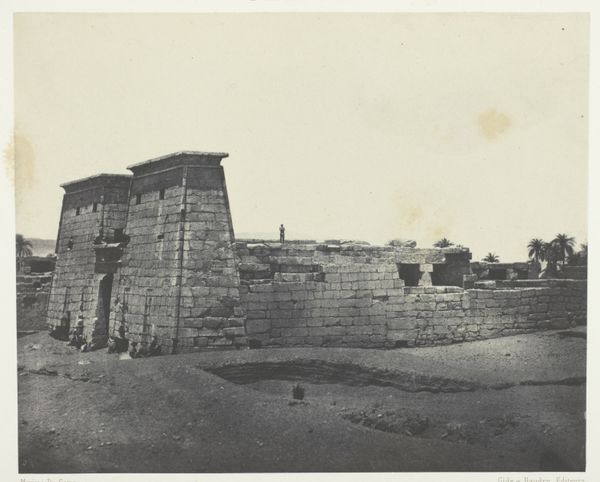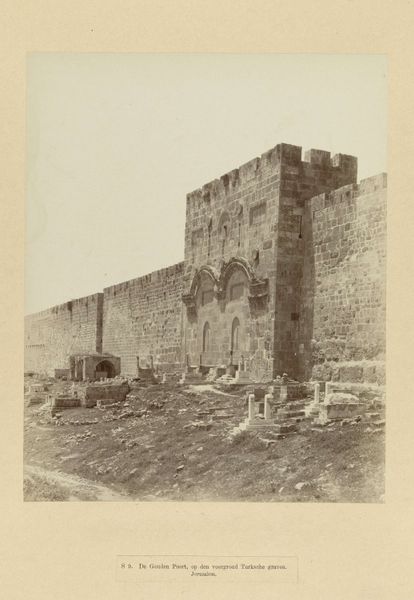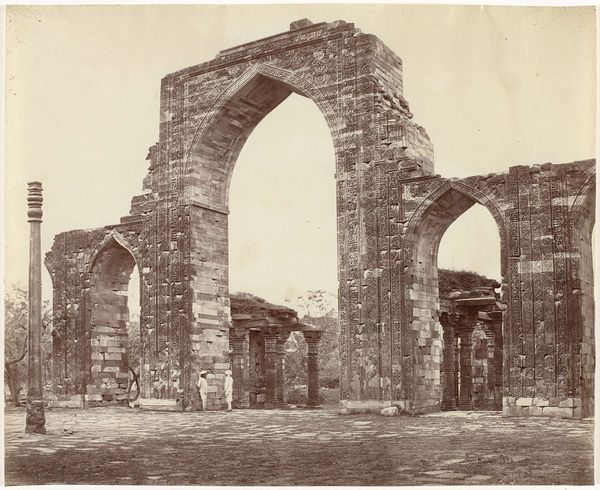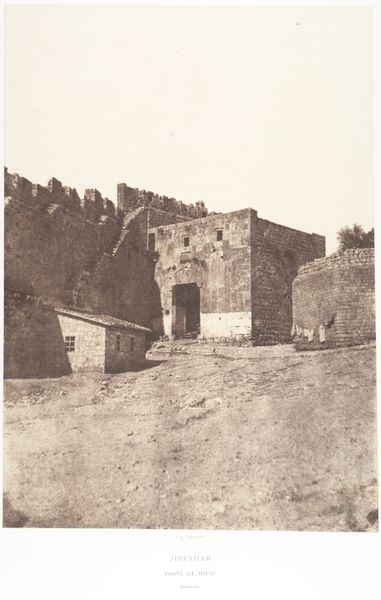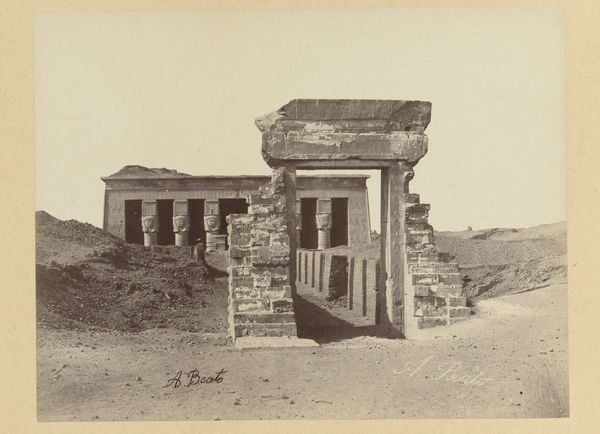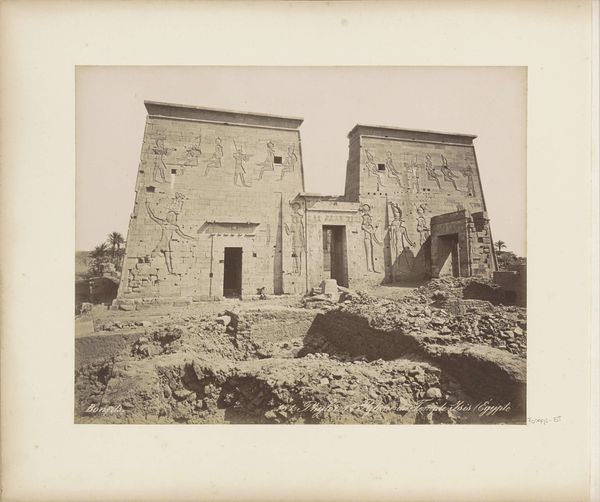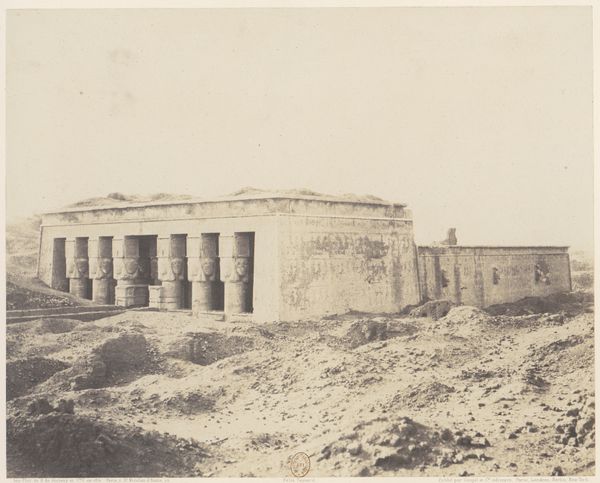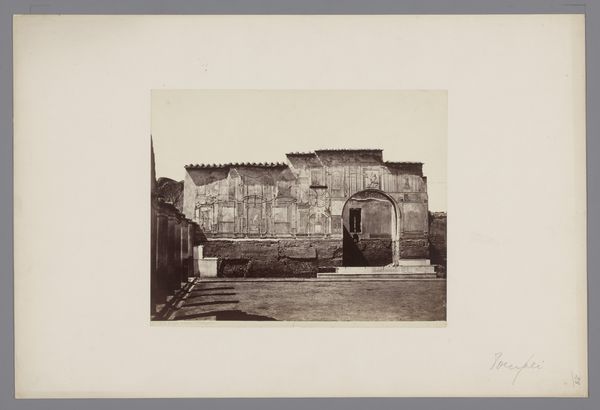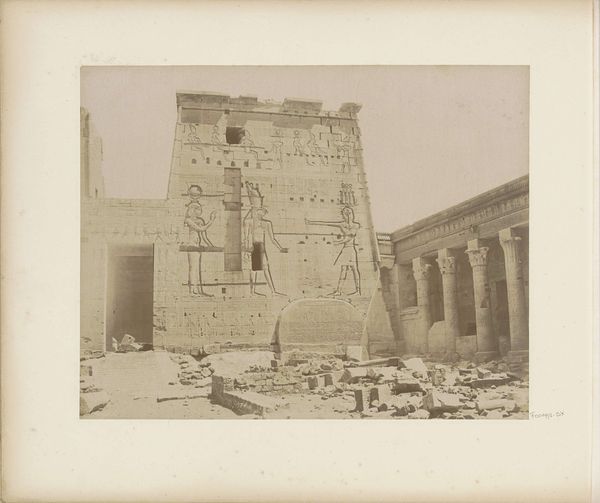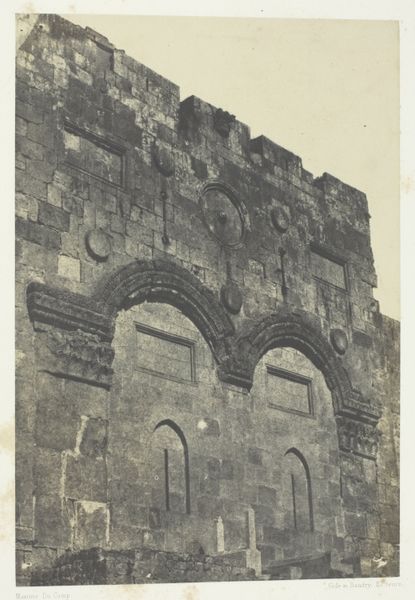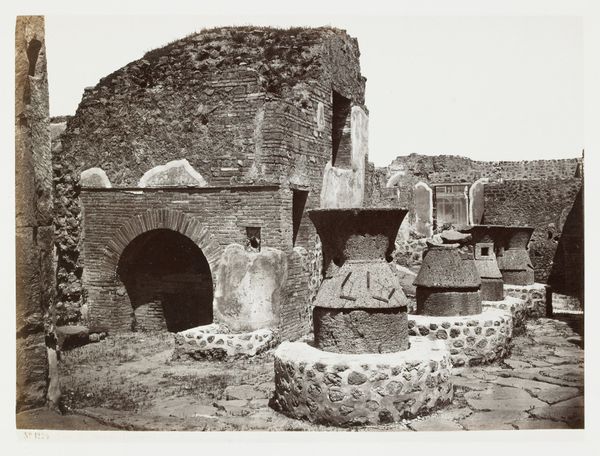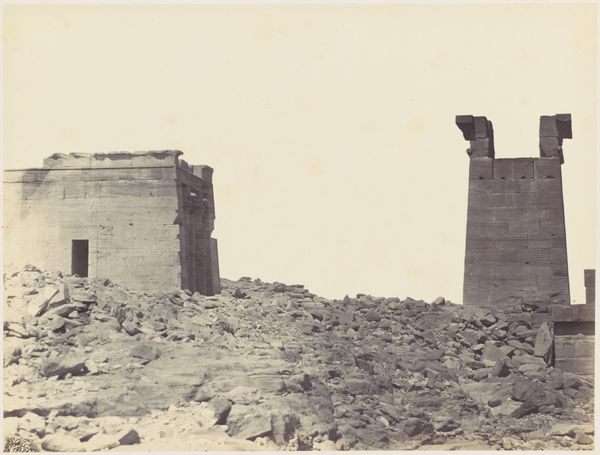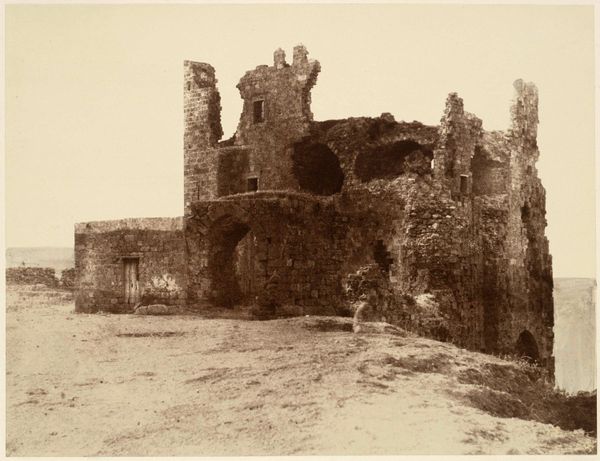
photography, albumen-print, architecture
#
photo restoration
#
landscape
#
ancient-egyptian-art
#
historic architecture
#
traditional architecture
#
photography
#
historical photography
#
geometric
#
ancient-mediterranean
#
19th century
#
albumen-print
#
architecture
Dimensions: height 200 mm, width 256 mm, height 469 mm, width 558 mm
Copyright: Rijks Museum: Open Domain
Editor: This albumen print, "Tempel van Isis op het eiland Philae," was taken by Antonio Beato sometime between 1862 and 1895. I'm immediately struck by the sense of scale and decay; you can see the wear of centuries on the temple, but also get a real feel for its original grandeur. What do you see in this piece from a historical perspective? Curator: I see more than just a photograph of a temple, I see a document reflecting shifting power dynamics. Consider that this photograph was created during a period of intense European interest in, and indeed, appropriation of Egyptian culture. This isn’t simply a record; it's a presentation, crafted for a Western audience. Editor: So, you’re suggesting that even the act of photographing the temple was a form of, well, almost a kind of cultural possession? Curator: Precisely. Photography itself became a tool of empire, allowing Europeans to "capture" and disseminate images of foreign lands and cultures, often reinforcing colonial narratives about the "exotic" Orient. It served as visual confirmation of their dominance, feeding the fascination but also perpetuating a power imbalance. Look at where the photographer is standing in relation to the subject – there's a deliberate staging. What's emphasized? Editor: You're right, the photographer is lower than the ruins of the temple; and in a way, that adds to the impression that viewers are meant to 'gaze up' and be awed. But the ruinous state also shows something else. Curator: What do you mean? Editor: It shows the slow 'conquering' power of time itself. And somehow I think that speaks to a different kind of empire entirely. Curator: An interesting point! Considering the wider distribution of such images allows us insight into how the public, then and now, engage with ideas of ancient culture and our place in history. A photograph such as this captures both a building, a specific era and so much more. Editor: I agree; thanks so much. I didn’t think about the photograph itself acting as a political object!
Comments
No comments
Be the first to comment and join the conversation on the ultimate creative platform.
